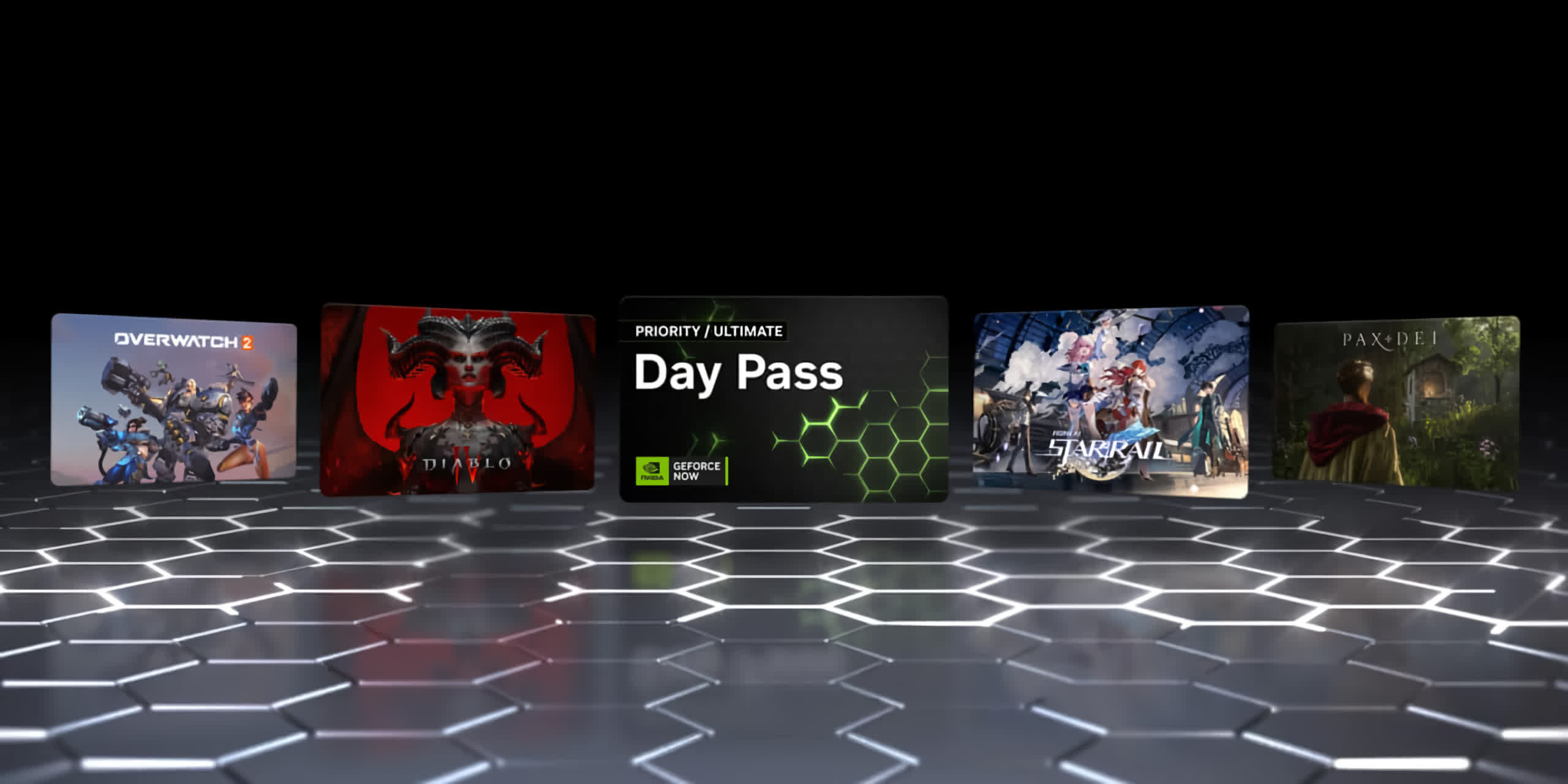Bottom line: GeForce Now has emerged as a reasonably attractive option for those who either lack a gaming PC or wish to experience Nvidia's top GPU offerings without a significant financial commitment. The addition of G-Sync to the service enhances its value, allowing gamers to utilize high refresh rate monitors they already own.
The Consumer Electronics Show is in full swing, and in addition to new Super GPUs, Nvidia has announced new features for the GeForce Now cloud gaming service. The company is integrating G-Sync technology into the service and introducing a "day pass" feature for some members. Additionally, a range of new Activision-Blizzard titles are coming to GeForce Now.
G-Sync is launching on the cloud platform, promising smoother gameplay and reduced latency, crucial as GeForce Now's Ultimate tier supports up to 240 FPS. This keeps GeForce Now a viable choice for those unable to afford or build their gaming PC.
Also read: Nvidia GeForce Now Ultimate vs. New Graphics Card – Which Is Better?
Speaking of G-Sync, Nvidia's vaunted technology is getting an upgrade itself with the introduction of G-Sync Pulsar. Nvidia says it's invented a new technology called "variable frequency strobing" , claiming it delivers a "stutter-free experience and buttery smooth motion." Pulsar eliminates the compromise between smooth refresh rate and reduced motion blur, offering gamers both benefits.
Variable frequency strobing, as explained by Nvidia, "dynamically adjusts strobing patterns to match varying render rates." It alters how quickly each pixel shifts to different colors, syncing with the variable refresh rate (VRR) that adjusts the monitor's refresh rate to the GPU output, thus preventing smearing effects.
"Complementing this, the technology also intelligently controls the pulse's brightness and duration – key to maintaining visual comfort and eliminating flicker. Flickering, often a byproduct of strobing methods used to diminish motion blur, can disrupt the gaming experience and cause viewer discomfort. By adaptively tuning backlight pulses in response to the constantly changing game render rate, G-Sync Pulsar creates a consistent and comfortable viewing experience, effectively accommodating the display's dynamic nature."
Nvidia is showcasing some Counter-Strike 2 gameplay (watch below) captured with a high-speed camera at 1,000 frames per second, displayed on a 360Hz Asus ROG Swift monitor with Pulsar activated. The Pulsar-enabled gameplay appears noticeably smoother, even at this high frame rate.
With G-Sync coming to GeForce Now, there should be relative performance parity between cloud subscribers and those who own physical gaming PCs (in theory). Additionally, Android users will be able to stream GeForce Now at 1440p and take advantage of both a high refresh rate screen and higher resolution. Also, Japanese gamers will finally be able to subscribe to GeForce Now thanks to a partnership with internet service provider KDDI.
Despite the performance upgrades, Nvidia recognizes that not everyone is willing to pay $20 just for a trial of the highest tier. To address this, Nvidia is introducing "day passes," allowing Priority and Ultimate memberships for a day. Starting next month, day passes will be available at $3.99 for Priority and $7.99 for the Ultimate tier.
Finally, more games are arriving on the GeForce Now service. Notably, Diablo IV and Overwatch 2, along with Exoprimal, Honkai: Star Rail, and Pax Dei, are joining the platform. While some may be skeptical about playing competitive shooters like Overwatch 2 on a cloud streaming service, the G-Sync update should hopefully mitigate at least some of the latency issues.
